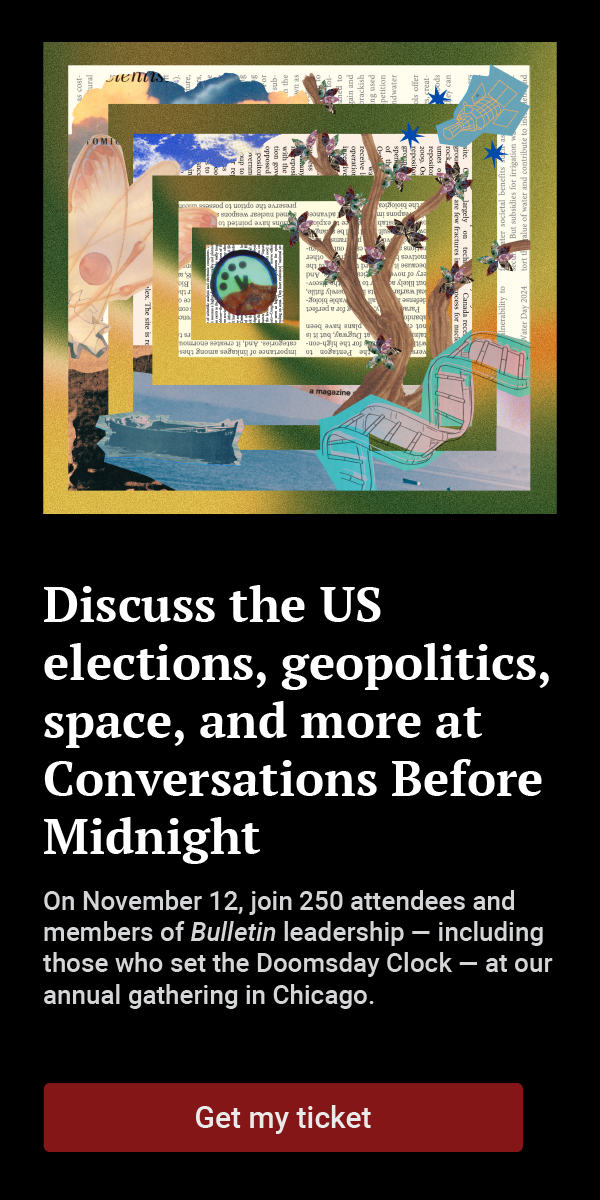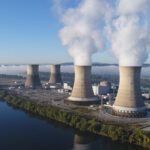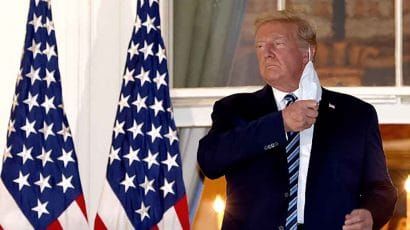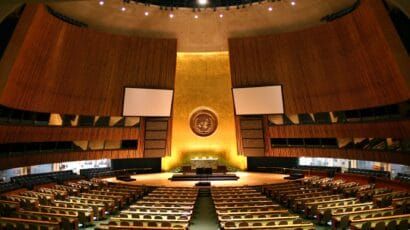The renewable energy transition has begun
By Grant Smith, Pam Solo | February 4, 2014
Editor's note: This article is a response to a recent Bulletin column, which can be found here.
With all due respect to Bulletin columnist Dawn Stover, the Civil Society Institute and the Nuclear Information Resource Service do not share her perspective of the circular firing squad that she implied nuclear and renewables advocates had begun in her recent Bulletin of Atomic Scientists piece, “Nuclear vs. Renewables: Divided They Fall.”
First, we’ve done our homework at the Civil Society Institute. We commissioned studies to show that coal-fired power could be phased out, along with 25 percent of the nuclear fleet, by 2050, more cheaply than adhering to business-as-usual investment. Moreover, our studies—like the National Renewable Energy Laboratory's—found that reliable power could be maintained with high renewable penetration, and with current technology. Additional analyses coming to similar conclusions include Mark Z. Jacobson’s work at Stanford University, which demonstrates the enormous potential of wind, solar and wave energy, and Institute for Energy and Environmental Research president Arjun Makhijani’s work, which sets out a time frame for the incremental introduction of a panoply of feasible technologies, with the aim of creating a carbon-free and nuclear-free economy by 2050.
The Civil Society Institute-commissioned studies were published in 2011 and 2012. Since that time, a lot more experience has been gained with renewables penetration, and the cost of wind and photovoltaic solar power has continued to drop. And, as Stover points out, energy efficiency—which we’ve always asserted should be the foundation of any energy policy—can drive down costs and demand still further.
The government subsidies the nuclear industry has received over the last 60 years dwarf federal support for renewables and efficiency—and storage, for that matter. But there is a difference between the subsidies for nuclear and for alternative energy: The subsidies for nuclear have not resulted in technological advances or cost reductions. In fact, the so-called next-generation nuclear technology has already failed, after billions in research and development funding globally. Fossil fuels in fact continue to receive subsidies as well, a fact not presented by the Bulletin's columnist.
The longevity of subsidies is something else that has to be taken into account. Wall Street analysts predict that 700 megawatts of unsubsidized solar photovoltaic power will be built this year globally, with no subsidies required in most parts of the world by 2020. The wind industry in the United States said last year that it will need subsidies only until 2018. Again, Wall Street analysts predict wind deployment without subsidies in many areas of the globe by 2020. And new wind technology soon to come online will produce more power per wind turbine.
As for storage, various technologies are being deployed slowly but still have a much more promising future than nuclear ever had. Unlike new nuclear designs, these technologies—which include ultracapacitors, flywheels, batteries, and compressed air storage—haven’t failed. They are being developed quickly. And it appears they would be better at balancing electrical output on the grid than natural gas-fired power, a conclusion reached in a study conducted by the California Public Utility Commission.
Nuclear power plants (large or small) and renewables are not compatible technologies. A distributed grid design with high penetrations of variable renewables requires flexible technologies for balancing the system. Both nuclear and coal plants are inflexible. They cannot respond to variability in power generation quickly enough. And the more money is dumped into nuclear, the less is available for these more easily deployable and financially less risky options for storing electricity to use in grid-balancing. It would also cost billions to reinvigorate the nearly non-existent nuclear supply chain in the United States. Indeed, a conference about energy project financing in January, Infocast’s Projects and Money 2014, was attended by heavy-hitter financial institutions, and no one uttered a word about nuclear power. The emphasis was on solar photovoltaic and, yes, natural gas, which is still in the beginning of a boom (although the bust is just around the corner as greenhouse gas emissions, cost, and water concerns are fully realized). The conference also showed there is emerging interest in the financing of storage projects.
Climate change matters, but so do affordability, public health, water availability and quality, environmental quality, reliability, and grid resiliency. Nuclear fails on all those counts.
Stover asserted that for renewables to become a mainstay of the US power supply, there would need to be a massive build-out of the electrical transmission system; this assertion may be premature. The United States is the world leader in microgrids at the moment, with 260 projects in the works or already operating, and it accounts for 84 percent of all such projects globally. A great example of this movement is the microgrid on the University of California, San Diego’s 1,200-acre campus. It covers 90 percent of UCSD demand and paid for itself in 10 months. It saves the university $800,000 per month and has helped the utility serving the area avoid blackouts.
It's difficult for us to understand why people somehow do not get that the United States is in an energy transition, and that transitions do not come about in an even way, or without glitches. People didn’t go to bed on December 31, 1900 with a horse and buggy in the barn and wake up on January 1, 1901 with a car in the garage. It took 30 years for automobiles to dominate the transportation landscape. And figuratively speaking, we are at the December 1900 stage with respect to the evolution of a distributed electrical grid out of the current, largely centralized grid. By 2025 (and perhaps earlier), the concept of decentralized electrical generation and microgrids and the investment pattern that supports them could be firmly anchored in US thinking and well on its way to execution.
To be sure, the fossil fuel and utility industries aren’t entertained by distributed renewable electricity production and other efforts toward energy sustainability. In particular, these industries characterize energy efficiency and photovoltaic solar efforts, particularly, as “disruptive challenges” to their current gravy train, also known as the central electric generating station paradigm, which includes captive, lucrative ratepayers. The Koch Brothers and the largely industry-funded American Legislative Exchange Council wouldn’t be pushing to eliminate or weaken state level renewable energy standards and net metering statutes and regulations if they were amused about the dispute between nuclear and renewable advocates. Fortunately, the Council’s attempts to cripple state renewable-energy standards statutes, backed by bogus cost and economic analyses, have largely failed.
Those who support renewable energy growth are dealing with a political rear-guard action by the utility, fossil fuel, and nuclear industries. The transition in the United States would occur much more quickly if the federal and state governments adopted sound public policies tied to systematic planning and support for the least financially and environmentally risky technological mix on the electric grid. Politics is the only thing standing in the way of this historic and beneficial shift in electric grid investment and design.
Together, we make the world safer.
The Bulletin elevates expert voices above the noise. But as an independent nonprofit organization, our operations depend on the support of readers like you. Help us continue to deliver quality journalism that holds leaders accountable. Your support of our work at any level is important. In return, we promise our coverage will be understandable, influential, vigilant, solution-oriented, and fair-minded. Together we can make a difference.
Topics: Climate Change, Nuclear Energy, Opinion















